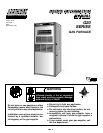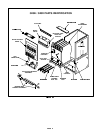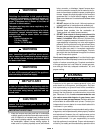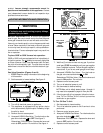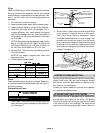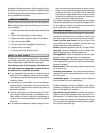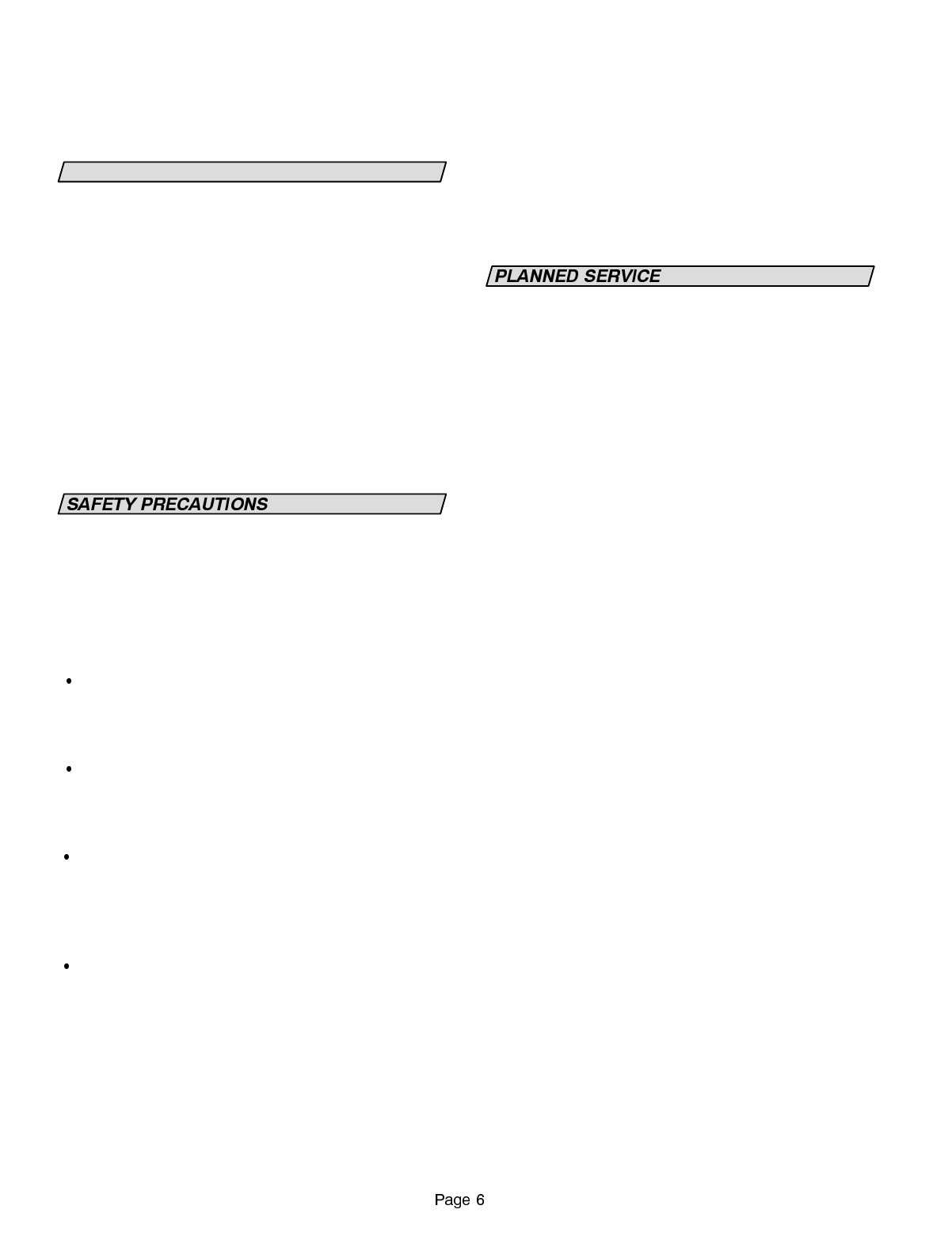
blockage of the heat exchanger. If the furnace fails to op-
erate due to the functioning of either of these switches,
DO NOT attempt toplace the furnaceinto operation. Con-
tact a qualified service person.
SERVICE REMINDER
Call your Lennox service technician if unit is inoperative.
Before calling, always check the following to be sure ser-
vice is required.
1- Check to see that electrical disconnect switches are
ON.
2- Check room thermostat for proper setting.
3- Replace any blown fuses or reset circuit breakers.
4- Gas valve should be ON.
5- Air filter should not be plugged limiting air flow.
6- Is gas turned on at meter?
7- Is manual main shut-off valve open?
To keep your Lennox gas heating system in peak operat-
ing condition year after year, contact your independent
Lennox dealer about a planned service program.
If you discover any of the following, shut down your
unit, and contact an independent Lennox dealer for
an inspection by a qualified technician.
If you repeatedly hear any new or unfamiliar sounds
while your unit is operating, there may be a problem.
For example, poorly performing burners can produce
unfamiliar noises.
If you smell any unusual odors, your unit may be oper-
ating improperly. For example, units can give off unfa-
miliar odors if components are required to operate in
abnormal conditions.
Look for visible signs of a malfunctioning unit. Exam-
ples include unusual amounts of condensate on win-
dows inside your house, visibly burnt components or
unusual dirt or rust accumulations on the vent pipe or
in the unit.
If you experience headache, nausea, fatigue, or dizzi-
ness, the cause could be exposure to carbon monox-
ide gas. This is often misdiagnosed as the flu because
symptoms are similar. If you suffer from flu-like symp-
toms that are exaggerated at home, but seem to sub-
side while you are away from the house, exposure to
carbon monoxide could be the cause.
Your vigilance may pay off in early detection of a problem
before either personal injury or property damage occurs.
Do not hesitate to contact a qualified service technician
as an investment in your well being.
You should expect a service technician to check the fol-
lowing items during an annual inspection. Power to the
unit must be shut off for the service technician’s safety.
Fresh air grilles and louvers (on the unit and in the
room where the furnace is installed) - Must be open and
unobstructed to provide combustion air.
Burners- Must be inspected for rust, dirt, or signs of water.
Vent pipe - Must be inspected for signs of water, dam-
aged or sagging pipe, or disconnected joints.
Unit appearance - Must be inspected for rust, dirt, signs
of water, burnt or damaged wires, or components.
Blower access door - Must be properly in place and pro-
vide a seal between the return air and the room where the
furnace is installed.
Return air duct - Must be properly attached and provide
an air seal to unit.
Operating performance - Unit must be observed during
operation to monitor proper performance of the unit and
the vent system.
Combustion gases - Flue products must be analyzed
and compared to the unit specifications.
Problems detected during the inspection may make it
necessary to temporarily shut down the furnace until the
items can be repaired or replaced.
Pay attention to your furnace. Situations can arise be-
tween annual furnace inspections that may result in un-
safe operation. For instance, items innocently stored next
to the furnace may obstruct the combustion air supply.
This could cause incomplete combustion and the produc-
tion of carbon monoxide gas.



